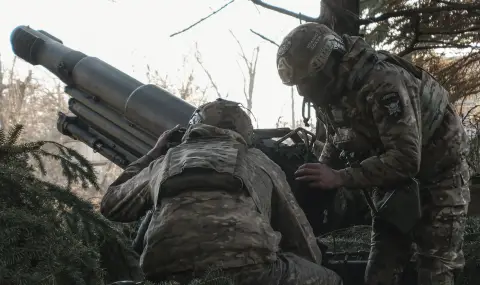Ukraine may have taken the "first step" to changing its strategy to repel the Russian onslaught. This is how Jen Spindel, a professor at the University of New Hampshire in the USA, assesses the current events in the Kursk region, in a conversation with DV. "Ukraine cannot continue to wage this war as it has been doing for the previous two years. It simply does not have the necessary resources for this - neither people nor weapons", notes the American expert on foreign policy and security issues.
Spindel believes that the Ukrainian operation in the Kursk region may be an attempt to change the strategy from "a war of equality to a war of attrition, an asymmetric war". She and her colleagues called for just such an approach back in May in an article in the American magazine Foreign Affairs, which was titled: "How Ukraine can achieve more with less.". "Ukraine has demonstrated that Russian territory is no longer inaccessible and that it will attack Russia to force it to divert some of its forces from bombing and destruction in Ukraine," Spindel said on this occasion.
What goal does Ukraine pursue in the Kursk region?
Three days after the start of the Ukrainian Armed Forces (UAF) operation in the Kursk region, there is still little information about what is happening on the Ukrainian side. In any case, this is the first Ukrainian incursion into the Russian Federation, not into Russian-occupied Ukrainian territories. In 2023, similar but smaller-scale operations took place in the Belgorod Region. However, they were carried out by armed formations composed of Russians fighting on the side of Ukraine.
Austrian military historian Lt. Col. Markus Reisner believes that the Ukrainian operation was carefully planned, while Russian intelligence, he says, "completely failed". For Ukraine, this is a “clear informational victory”, as attention is now focused on Kursk, and not on the Donbas cities of Toretsk and Chasov Yar, where for the Ukrainian army, the "situation is escalating". If Ukraine manages to hold its positions in the Kursk region for a while, it may force Russia to regroup and "reduce the pressure" on the Ukrainian units in Donbass, Reisner says.
"It's good for morale"
Gustav Gressel, a Berlin-based expert at the European Council on Foreign Relations think tank, is more skeptical. "It's good for morale, but overall it changes almost nothing in the war" - this is how he assesses the Ukrainian offensive in the Kursk region. "There are no signs that Russia is preparing to withdraw its forces from eastern Ukraine to stop the Ukrainian operation," Gressel said. Russia will mostly benefit from the extension of the front on Russian territory, because it will lead to an extraordinary overstretching of the Ukrainian forces, he adds.
Experts also mention other goals of Kiev - improving its position in possible future negotiations with Russia and the desire to demonstrate to the West that Ukraine is able to successfully oppose the Russian army after the failed counter-offensive in the summer of 2023. "Perhaps the Ukrainian leadership wants to demonstrate to Russia and especially to the West that its forces are not exhausted and that Ukraine can still win the war if the arms deliveries continue," says German political scientist and publicist Winfried Schneider-Deters .
How will the US and other partners of Ukraine react?
Until now, Ukraine has refrained from such attacks, considering the position of its Western partners, and especially the United States, notes Schneider-Deters. Fearing an escalation by the Russian Federation, Washington, Berlin and others have banned Ukraine from using Western weapons for offensive purposes on Russian territory. It was only after the Russian attack near Kharkiv that the US and other countries eased the restriction in May 2024, but only for strikes on military targets in border areas and not for all types of weapons. Kiev, for example, has the right to use ATASMS missiles only on Russian-occupied Ukrainian territory.
So far, the US has reacted with restraint to the events in Kursk. But experts like Jen Spindel are confident that now “efforts will focus on diplomatic attempts to reduce tensions - as far as that is even possible at the moment".
How far can Ukrainians advance in the Kursk region?
Ukraine's operation in the Kursk region is not aimed at Ukrainians advancing to Moscow, she says. The expert points out that the more the Ukrainians advance, the greater the probability that Russia will be able to cut off the supply routes of the Ukrainian units. According to her, in order to achieve its military goals, Ukraine should not penetrate deep into Russian territory, but "advance to the places from where strikes are carried out and where weapons are stored".
At the same time, Ukraine must maintain a balance and comply with the US position, Spindel recalls. According to her, so far Ukraine has advanced "enough to make the operation sensitive for the Russian Federation, but not enough to dispel the concerns of the US and other partners of Ukraine about a possible escalation". In general, Spindle does not expect the events in Kursk Oblast to lead to "significant changes" in the course of the war. She believes that there will be more such operations and that Ukraine will seek the effect of surprise. The goal, according to her, is to "put Russia out of balance".
Author: Roman Goncharenko
